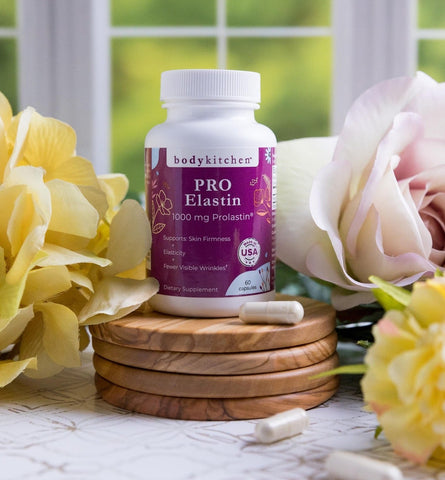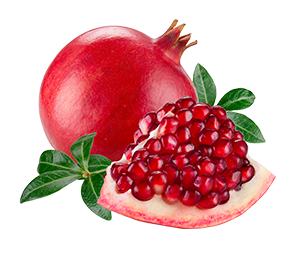What’s In a Woman’s Multivitamin That’s Not Appropriate for a Man?
Multivitamins may all seem the same on the outside, but in fact many brands are quite unique, especially when it comes to gender. A women’s multivitamin is designed to meet the nutritional needs of women at different stages of life.
But a common question is, can men take women’s vitamins, and vice versa? While both sexes need all the same vitamins and minerals overall, the optimal amounts vary due to differences in biology, hormones and disease risk. This is why a woman-specific multivitamin can look very different from a men’s multi.
Let’s take a look at the common nutrients in a women’s multi and see why sticking with gender-appropriate options is ideal.
Why Women’s Vitamins Contain Iron
Iron is one of the key differences in men’s vs women’s multivitamin. During the reproductive years, women have higher iron needs to compensate for blood loss during menstruation. The recommended daily intake (RDA) for women age 19-50 is 18 mg per day, while for men it’s only 8 mg per day. That’s quite a difference!
For this reason, a women’s multivitamin commonly has higher iron levels than those for a man. In fact, most men’s formulations are iron-free or contain only small amounts.
Why does this matter? If men take excessive amounts of iron, it can start to accumulate and possibly contribute to inflammation, heart disease, gastrointestinal distress, certain cancers and even disrupt hormone and nerve function.1
Bottom line: Some womens’ multivitamins may contain high levels of iron that could be potentially harmful for men long-term.
Calcium Requirements for Women’s Health
Calcium plays a key role in bone health for all people, but women tend to have higher needs, especially after menopause. This means, unless you are getting a lot of calcium from food, calcium supplements for women can be a useful tool.
The RDA for calcium jumps from 1,000 mg per day up to 1,200 mg per day after age 50 due to declining levels of estrogen, which speeds up bone loss.2
To help keep bones strong, some women’s multivitamins may add extra calcium, which is great. But be aware, just because a women’s multivitamin doesn’t have a lot of calcium does not mean it’s not a good supplement. Calcium is a large mineral and is often hard to fit enough into a standard pill, so sometimes the best option is to take a calcium supplement separately.
The best calcium supplements for women will typically be combined with vitamin D and other bone-supportive nutrients, and in divided doses to maximize absorption.
Vitamin D Dosage in Multivitamins
Male or female, we all need vitamin D, as it plays very important roles in bone health and immune function. While we can get some from the sun, most often we do not get enough. And women over 50 may need to increase their intake to maintain critical bone strength.3
Many women’s formulas will contain anywhere from 800 – 2,000 IU per day, which is great for daily maintenance. Not sure how much vitamin D you should be getting? Ask your doctor to test your vitamin D levels so you can target the right amount.
Vitamin E Benefits for Women
Vitamin E acts as an antioxidant that protects our cells, but it also provides some women-specific benefits. Vitamin E benefits for women may include reducing PMS symptoms, boosting the immune system, helping the heart, improving the skin, and even reducing cancer risk.4,5
The RDA for adults is 15 mg per day, but most women’s multivitamins contain slightly more than this. While it might be tempting to add more vitamin E to your routine, this is not one where you want to add too much.
In studies, very high doses of vitamin E have actually worsened health, so stick with the amounts in your multivitamin to play is safe, unless otherwise directed by your doctor.6
Folic Acid in Women’s Supplements
Folic acid is the synthetic form of folate, a B-vitamin that our bodies use for DNA synthesis, cell reproduction, and neural tube development. But folic acid benefits for women go beyond growth and pregnancy. It has also been linked with mood, nerve function and heart health.
Folate is relatively easy to get from the diet, in foods such as beans, oranges, leafy greens, eggs and enriched cereals and pasta. But because of folate’s critical role during pregnancy, you may need more. Many women’s multivitamins will contain at least 400 – 800 mcg of folic acid to make sure the bases are covered.
Now, men need folate as well, but not as much as women during the reproductive years. Folic acid supplements for women are not harmful for men per se, but they may do better with a lower dose, unless there’s reason for higher intake such as poor diet habits, issues with nutrient absorption, or are managing certain health conditions.
Final Thoughts
Multivitamins, while they often look the same across the board, usually serve very specific needs with the package of nutrients they offer. They are not a one-size-fits all solution. Women’s formulas are uniquely designed to support women as they age and during specific points in life, such as pregnancy or menopause.
Certain nutrients, such as iron, calcium, vitamin E, vitamin D and folic acid may fluctuate based on the stage of life, and often these levels are much higher than what men need. While this may not be a big deal in the short term, there clearly is a difference between a men’s multivitamin and women’s, and they should be used appropriately.
If you are unsure which formulation is right for you, talk with a registered dietitian or your trusted healthcare provider for personalized guidance. Supplements are an amazing tool that can be very helpful for health – but only when matched appropriately to your unique needs and stage of life.














